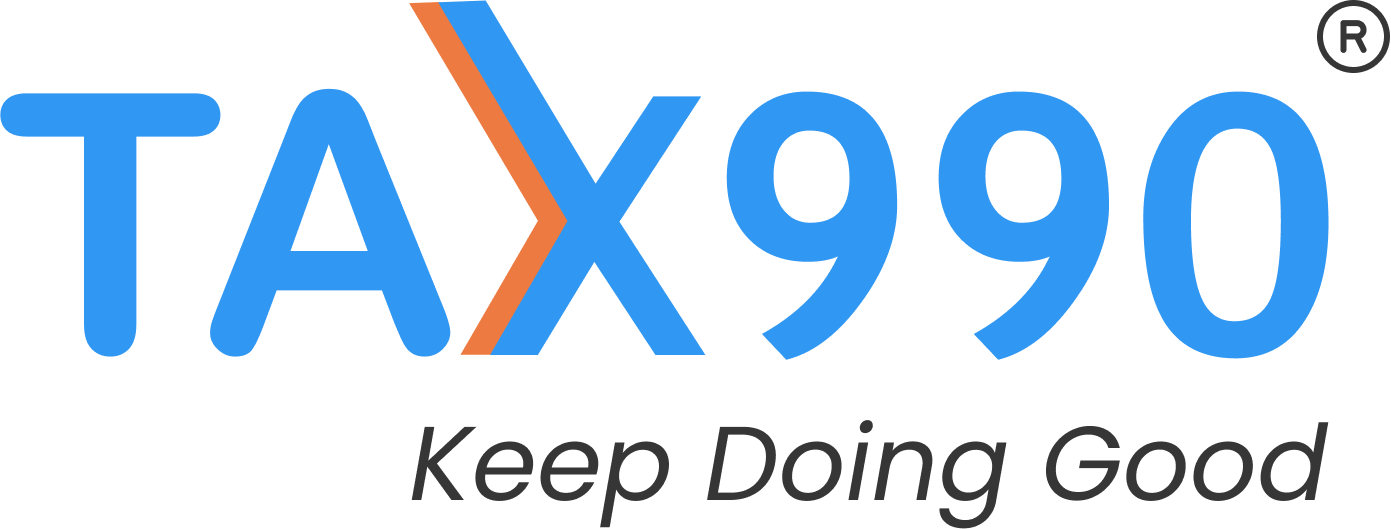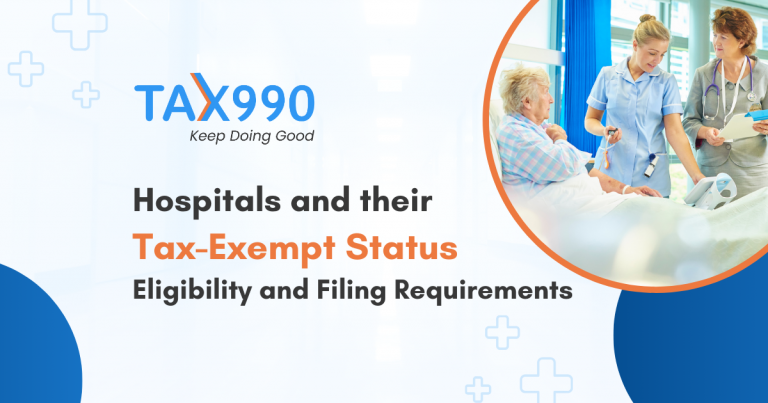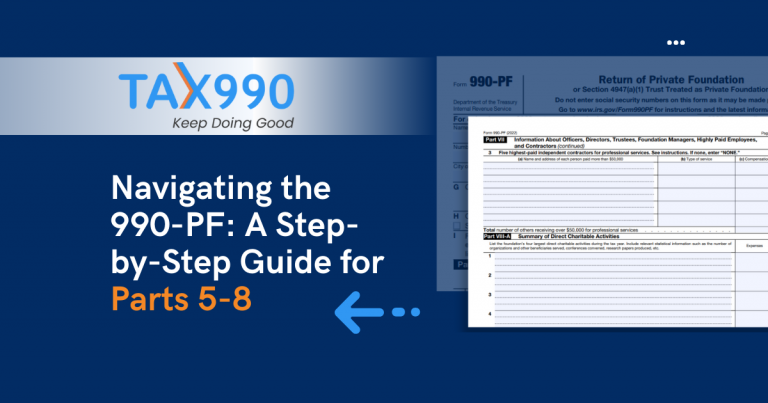Estimated reading time: 21 minute(s)

The 990-PF form is a lengthy document consisting of 13 pages, and 16 Parts that allow the foundation to provide extensive information to the IRS regarding the activities and actions of the organization throughout the tax year.
We are going to break down these different parts in a 4-part blog series to help explain the importance, reporting requirements, and processes for each section.
Entering 990-PF Basic Information and Getting Started
When you begin a 990-PF for the tax year, you will start by providing basic information about the organization in Parts A-C such as the name, address, and EIN. In Part D-F you will be able to indicate if the organization has taken any steps towards termination or operations in a foreign capacity outside of the US.
You will also indicate in part G if the organization is filing an initial or final return, has a change in address, amending a previously filed accepted return, or reporting a name change. If none of these topics apply to the foundation, it is not required to complete part G.
Part H is to indicate what type of organization the Private Foundation has exempt status under. Most often this will be a 501(c)(3), or a 4947(a)(1). If you are not sure, you will want to refer to your IRS determination letter for confirmation.
Part I will be completed once you work on the rest of the return as it has to match the value listed in Part II, Line 15 column . Part J will allow you to indicate your organization’s accounting method of either cash or accrual.
That’s the easy part, let’s move into the bulk sections of the 990-PF form.
Part I Analysis of Revenue and Expenses
Part I is where you will list your analysis of revenue and expenses. This is where you can indicate to the IRS where your organization’s revenue came from, what expenses were accrued during the tax year, and provide a value for excess of revenue over expenses and disbursements, net investment income, and adjusted net income. It is important to be as accurate as possible when completing this section as it will circle back and have to meet value in other areas of the return.
- In lines 1-11, you will categorize your revenue and provide specific values for expenses per book, net investment income, and adjusted net income for each category. The total revenue from all categories will be listed on line 12.
- Similarly, lines 13-25 allow you to report expenses per category for expenses per book, net investment income, and adjusted net income for each category. The total expenses from all categories will be listed on line 26.
If the organization does not have a value to report for a specific category or line item, that section can be left blank. It is not necessary to provide a value for each line if it does not apply to the organization’s financial information.
- Line 27 will be a calculated area for each column referring to expenses per book, net investment income, and adjusted net income. Each column will subtract the total expenses and disbursements from the total revenue. If the value ends up being less than zero, then a zero value should be reported, not a negative value.
Part II Balance Sheets
Part II is the balance sheet and is somewhat similar to the analysis of revenue and expenses. The balance sheet allows you to provide information on assets, liabilities, and Net assets of Fund Balance for the beginning and end of the tax year.
- In lines 1-15, you will categorize your assets and provide specific values for the beginning-of-year book value, the end-of-year book value, and the end-of-year fair market value. The total assets from all categories will be listed on line 16.
- Lines 17-22 allow you to report liabilities per category for the beginning-of-year book value, and the end-of-year book value. The end-of-year fair market value is not applicable to liabilities. The total liabilities from all categories will be listed on line 23.
Several lines in these sections will require additional information to further explain where the asset came from. You will be able to provide the explanation on a Schedule. If the organization does not have a value to report for a specific category or line item, that section can be left blank.
In the Net Assets or Fund Balances section, you will need to indicate whether your organization follows FASB ASC 958 or does not follow FASB ASC 958 and check the box accordingly.
- If you indicate your organization follows FASB ASC 958, you will complete lines 24 and 25.
- If you indicate your organization does not follow FASB ASC 958, you will complete lines 26, 27, and 28.
- In either lines 24 and 25 or lines 26, 27, or 28, report the difference between your assets and liabilities for both the beginning and end of the year in the necessary categories.
- Line 29 is going to be the total net assets or fund balances which is the difference between your assets and liabilities and should match what was reported on lines 24-25 or lines 26-28.
- Line 30 will be a combined total of lines 23 and 29. This amount must equal the amount on line 16.
Part III Analysis of Changes in Net Assets or Fund Balances
Part III is the Part III Analysis of Changes in Net Assets or Fund Balances. Most of this section is going to be values pulled from Parts I and II. The total value will determine the total net assets and fund balances of the organization for the end of the tax year.
- Line 1 will be the same value that is reported in Part II, column (a), line 29.
- Line 2 will be the value reported in Part I, line 27a.
- Line 3 is to add any additional increases that were not reported in the Part I and Part II categories.
If you add an additional increase, you will be asked to provide an explanation of where the increase is coming from. Line 4 is going to be the sum of lines 1-3.
- Line 4 is similar to line 3 in that it is an opportunity to report any additional information that was not categorized in Part I, and Part II, however, instead of an increase, you will be able to report any decreases not previously reported.
- If you report a decrease in Line 5, you will have to provide a narrative of the decrease.
- Line 6 will be line 4 minus line 5 and should be the same amount that is reported in Part II, column (b), line 29.
Part IV Part IV Capital Gains and Losses for Tax on Investment Income
Part IV is for reporting Capital Gains and Losses for Tax on Investment Income. The information provided here will help determine the values reported on Part I, lines 7-8.
Reported Capital gains or losses may include gains and losses from the sale of property that is used for charitable purposes, is held for investment, or is used to produce income.
You will work through Part IV by reporting the property sold, and providing information on how the property was acquired, the date it was acquired, and the date it was sold.
The financial information required will include the gross sales price, the depreciation allowed, and the Cost or other basis plus the expense of sale.
This information will calculate the Gain or (loss) by adding the Gross sales price and Depreciation allowed and subtracting Cost or other basis plus the expense of sale.
- The total of all gains or losses of sales will be reported in Part I, line 7, and Part IV line 2.
- If the total is a negative value, then a zero value should be reported in Part I, line 7.
- Line 3 is used to report a net short-term capital gain for the year this value will also be reported on Part I, line 8. Net short-term capital gain or loss could include assets sold or exchanged that were owned for less than a year.
Tax990 Streamlines the 990-PF Filing Process!
That was a lot of information. As always we recommend reaching out to a tax preparer and referencing the IRS 990-PF instructions with any questions that are specific to your organization’s finances.
Luckily Tax 990 offers specific features to help you navigate these sections such as auto calculations, the internal audit to remind you of what lines need to match, and automated schedule generation to help you verify when and where additional information is required.
Ready to get started? Create your free Tax990 account today!




